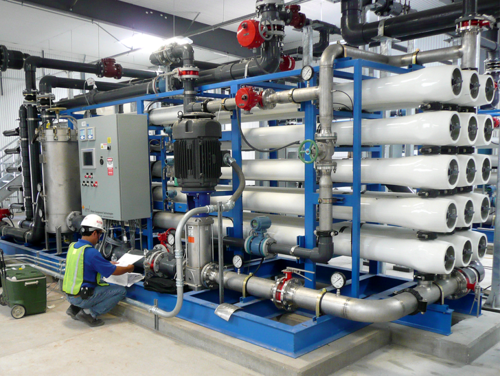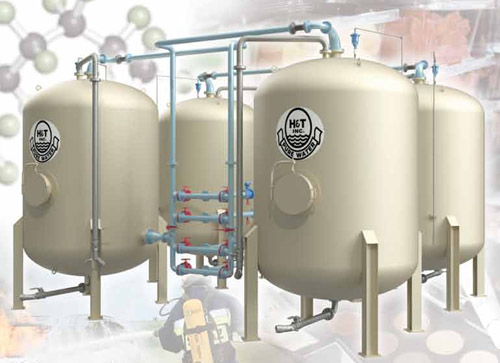How PFAS Therapy Makes Certain Tidy and Sustainable Water
The existence of PFAS, typically understood as "permanently chemicals," positions considerable difficulties to water quality and public health. The implications of these treatments expand past instant health and wellness advantages; they elevate critical questions about long-lasting water monitoring techniques that must be addressed to make certain a resistant future.

Comprehending PFAS Contamination
PFAS, or per- and polyfluoroalkyl materials, have actually emerged as a significant environmental issue because of their prevalent frequency and perseverance in the setting. These artificial chemicals have been utilized in numerous industrial applications and consumer products, including non-stick kitchenware, water resistant apparel, and food product packaging, as a result of their unique homes such as water and grease resistance.
The contamination of soil and water sources by PFAS happens mainly with industrial discharges, firefighting foam use, and leaching from garbage dumps. pfas management. As soon as launched, these materials are immune to deterioration, resulting in their accumulation in the environment. This persistence raises critical concerns, as PFAS can take a trip lengthy distances through groundwater and surface water supply, influencing alcohol consumption water materials and environments

Health And Wellness Risks of PFAS
The persistence of PFAS in the setting increases significant wellness issues for people subjected to these materials. Research study has actually linked PFAS direct exposure to different damaging health and wellness effects, consisting of immune system disorder, liver damage, and raised danger of particular cancers.
The universality of PFAS in consumer items, such as non-stick cookware, water-repellent textiles, and food packaging, additional amplifies the danger of exposure. Consuming water infected with PFAS is a considerable concern, as these chemicals can seep right into groundwater sources. At risk populations, consisting of youngsters and those living near industrial sites, may deal with intense risks because of their developing systems and potential for higher direct exposure degrees.
As awareness of these health and wellness threats remains to grow, regulative companies are beginning to establish standards for PFAS degrees in drinking water. Public health and wellness efforts are necessary to mitigate direct exposure and protect neighborhoods from the long-term impacts of these unsafe materials.

Ingenious Therapy Technologies
How can we properly deal with the obstacles positioned by PFAS contamination in water resources? Innovative therapy technologies are becoming crucial options in the quest for tidy water. These approaches focus on the removal or damage of per- and polyfluoroalkyl materials (PFAS), which are notorious for their determination in the setting.
One promising technique is adsorption using sophisticated products, such as turned on carbon and ion exchange resins. These materials have actually revealed efficacy in capturing PFAS particles from water. An additional significant technology is membrane purification, which makes use of nanofiltration and reverse osmosis to separate pollutants at the molecular degree, hence offering an obstacle versus PFAS.
In addition, advanced oxidation processes (AOPs) utilize strong oxidants to damage down PFAS substances right into harmless byproducts. This technique is specifically reliable for treating highly contaminated water resources. Bioremediation strategies, using specific bacteria, are additionally being explored to degrade PFAS.
As research study proceeds, hybrid systems that integrate numerous innovations may supply improved efficiency, dealing with the intricacies of PFAS contamination. The growth and implementation of these ingenious treatment innovations are crucial steps toward Bonuses guaranteeing the safety and sustainability of our water sources.
Benefits of Efficient PFAS Therapy
Successfully dealing with PFAS contamination in water sources considerably improves public health and wellness and environmental security. PFAS, frequently referred to as "forever chemicals," are resistant to destruction and can collect in the human body, leading to significant wellness threats such as cancer cells, liver damage, and immune system dysfunction. By executing reliable treatment approaches, neighborhoods can reduce direct exposure to these damaging substances, inevitably improving the wellness results of their populations.
In addition, effective PFAS treatment adds to the conservation of regional communities. Infected water can negatively influence water life and interfere with the delicate equilibrium of neighborhood habitats. By making certain clean water, treatment procedures protect biodiversity visit this web-site and preserve ecological stability.
In addition, effective PFAS remediation can cultivate public confidence in water high quality. When areas are assured that their drinking water is free from dangerous impurities, it promotes a sense of safety and security and well-being. This depend on is crucial for neighborhood interaction and assistance for continuous water monitoring initiatives.
Future of Water Sustainability
Amidst expanding problems about water high quality and deficiency, the future of water sustainability depends upon ingenious strategies and collective initiatives. As communities face the looming hazards of contaminants like PFAS, the growth of advanced treatment modern technologies is vital. These modern technologies not just concentrate on the removal of harmful substances however additionally promote the reuse and recycling of water, consequently reducing overall need.
In addition, effective water governance plays a vital duty in ensuring lasting methods. Policymakers have to integrate scientific research study with regulative structures to develop clear guidelines for water use and therapy. Stakeholder interaction, including regional neighborhoods and markets, cultivates a sense of shared obligation and motivates lasting techniques throughout different fields.
Financial investment in framework is additionally essential; updating aging systems to incorporate contemporary filtering and purification approaches can significantly improve water quality. Welcoming green technologies, such as natural purification systems, can give environment-friendly remedies.
Eventually, the future of water sustainability lies in a holistic strategy that incorporates technology, policy, and area participation. By focusing on these elements, we can guard our water this article sources for generations ahead, making sure tidy and sustainable water for all.
Final Thought
To conclude, the efficient therapy of PFAS is vital for making certain clean and sustainable water. By using advanced innovations such as turned on carbon adsorption, membrane filtration, and progressed oxidation procedures, communities can substantially lower the health dangers connected with these impurities. Furthermore, the combination of these therapy approaches sustains community security and improves biodiversity. Inevitably, durable PFAS therapy approaches contribute to long-term resilience in water administration, promoting public depend on in water top quality and advertising lasting techniques.